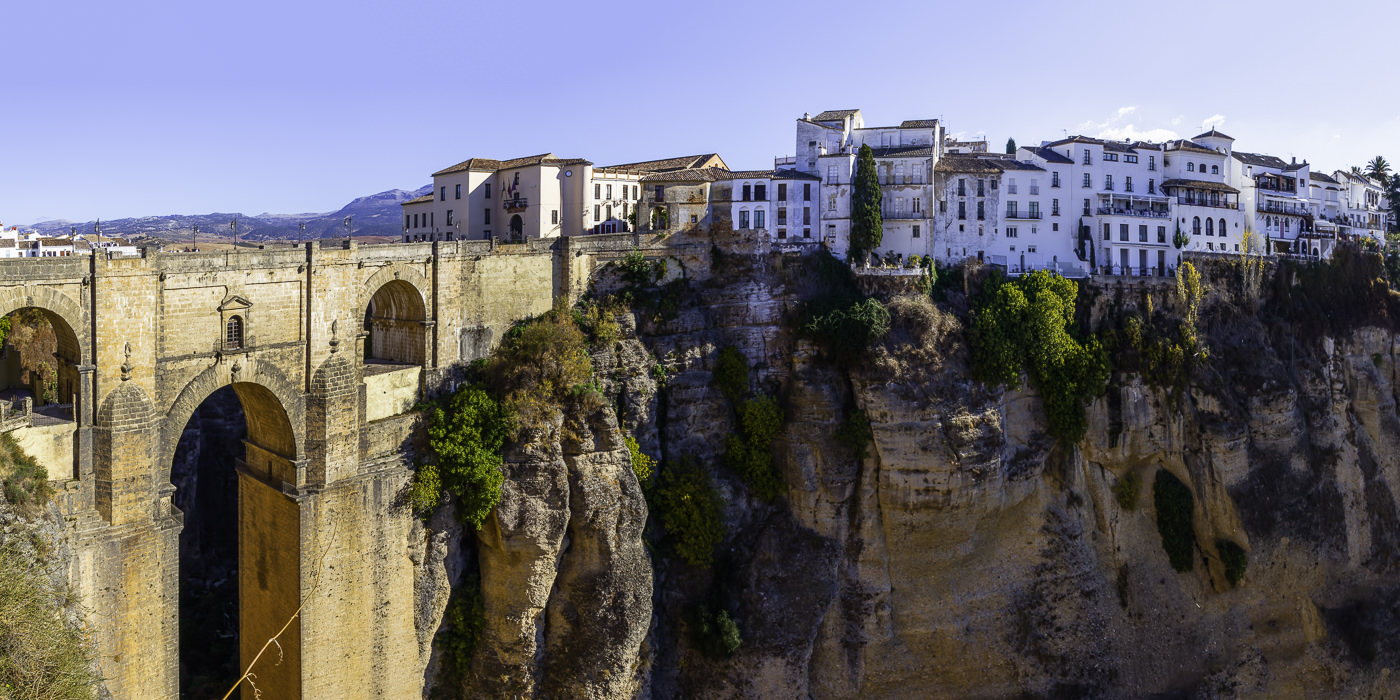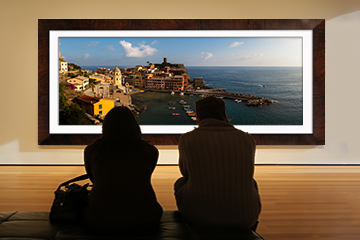
Trail of the pueblo blancos
Sunrise still an hour away, my trusty flashlight safe in my hotel room, I cautiously feel my way down a steep dirt path. After a few hundred meters I am rewarded with a view of the famous Ronda bridge, still just an ominous silhouette, looming above me in the morning twilight. My journey on the trail of the pueblo blancos begins here.
 Ronda is the most famous of the acclaimed white towns and is also the starting point on my trail of the pueblo blancos. To the west the sun is beginning to illuminate the mountain ranges within Sierra de Grazalema Nature Park. It is there I will be journeying, visiting several distinct towns known for their white facades, brown roofs and dramatic settings.
Ronda is the most famous of the acclaimed white towns and is also the starting point on my trail of the pueblo blancos. To the west the sun is beginning to illuminate the mountain ranges within Sierra de Grazalema Nature Park. It is there I will be journeying, visiting several distinct towns known for their white facades, brown roofs and dramatic settings.
Ronda is perched on a plateau split in two by El Tajo gorge. The “new Bridge” connects the city over the 100 meter gorge. Ronda is also surrounded by mountains adding to the stunning and dramatic setting. Established in the 9th century BC, Ronda is one of Spain’s oldest towns. The old town, La Ciudad, dates back to Islamic times, an important cultural and commerce center complete with Mosques and Palaces. The city has Spain’s oldest bullfighting arena (now also a museum) and enough local artisan shops, cafes and restaurants to loose yourself in for hours on end.
The distances between some of the towns are relatively small and the popularity of walking tours (guided or unguided) has grown significantly over the last few years. Since I only had a few days I chose to drive. A word of caution: If you are unaccustomed to driving in European towns be prepared that the streets are much more narrow and confusing. Rent a small car with a GPS that has current maps. More than once I stopped my car and had the GPS recalculate not believing that the goat path, or pedestrian bridge I was on was truly a road meant for cars.

About 20 km to the north of Ronda is Setenil de las Bodegas. Named after its once flourishing wineries Setenil de las Bodegas is unique among the pueblos blancos that were typicaly built on protective bluffs, rather this town grew out of a network of caves in the cliffs above the rio Trejo. Its striking white houses seem to grow like crystals from the rocks, and some even have rock roofs. The restaurants and bars are very popular especially at weekend lunchtime when there is a lively and festive atmosphere. The main street has a row of restaurants under the protection of a massive rock awning making for a great place to kick back and relax out of the hot Spanish sun.

The route continues deep into the Grazalema Nature Reserve, declared a Biosphere Reserve. Here you will see beautiful rocky mountains reflecting in the crystal clear water. In the park you will also find a castle built high on a rocky mountain peak and scattered below it are the pueblo blancos of Zahara de la Sierra. Zahara was once described by the British writer, as a "Moorish eagle's nest". The view from the tower above the city is worth the short hike and it helps to work off the delicious tapas found in numerous restaurants in the main square.

My journey ends in a high valley dominated by the magnificent rocky outcrop known as Peñon Grande and the mountain village of Grazalema. Grazalema is a lively village whose small population swells exponentially with the influx of seasonal visitors to the park. Its steep, cobbled streets are lined by whitewashed houses with windows covered by wrought-iron and plant pots filled with colorful flowers. A beautiful main square, the Plaza de España, makes up the heart of the city and is lined with bars and restaurants. Here you will find the 18th-century church of La Aurora, the village hall (ayuntamiento) and the parish church, the Iglesia de la Encarnación.

There are many more pueblo blancos, each singularly beautiful and most certainly worth visiting. There is something unique and special in every town, the only constant is the warmth and hospitality of the people who make this their home.


























Share On